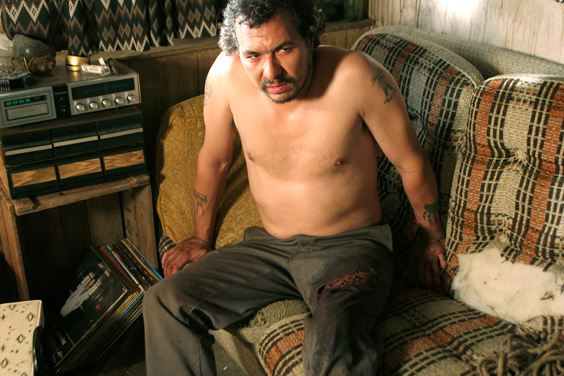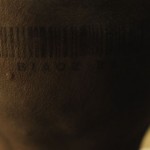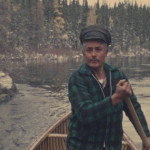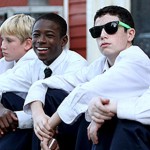RHYMES FOR YOUNG cialis generic drug GHOULS interview and casting call!
Award-winning local director Jeff Barnaby (File Under Miscellaneous) has announced an open casting call for the teen and child actors needed for his first feature Rhymes for Young Ghouls. Please read below for details on the casting call and order levitra now to learn how to submit an audition.
First Nations/Aboriginal Youth
FEATURE FILM – AUDITION OPPORTUNITY
Rene Haynes Casting in association with Prospector Films is seeking
First Nations Female Teens age 16 – 18 to play the 14 year old LEAD ROLE in the Jeff Barnaby feature film “RHYMES FOR YOUNG GHOULS” Filming in Montreal, QC, Canada in October 2012
Also seeking for Supporting Speaking Roles – All roles are First Nations / Aboriginals:
Male Teens – Age 16 – 19
Girls – Age 7 – 10 (who can play age 7)
Boys – Age 6 – 10 (who can play ages 5 & 7)
This casting search is being conducted via on-line audition submissions. To view material for this OPEN CALL – please go to:
Registration on ACTORS ACCESS is required and is COMPLETELY FREE for cialis levitra viagra compare this project. All details are provided on the link. Please register ASAP and upload your audition! The DEADLINE is JULY 1, 2012.
Questions to: rene@rhcasting.com
————————
Shayne Gryn talks to Jeff Barnaby about his first feature RHYMES FOR YOUNG GHOULS:
Rhymes for Young Ghouls is your first feature. Please talk about
the differences you’ve encountered in creating a long-form feature vs.
the short film format?
Well it isn’t the first screenplay that I wrote, that would’ve been Blood Quantum, the difference being, I wrote about nine drafts of B.Q. trying to figure out what I was doing wrong, where as I wrote two of RFYG. The first of which is what won the creative promise award at Tribeca. The problem was that I was coming out of a prose/poetry background and didn’t really understand the structure of a screenplay and the rules that went along with it. Plus I’m a very emotional and visceral writer, which translates great for a short film, I wrote FUM in a couple of hours, the colony in about 3 days, but the problem with a longer format, storylines have a tendency to meander, where as shorts are a lot more self contained. So I needed to figure out a way to transfer that energy to a longer format, so John and I figured we should just do an outline first. I was able to sit down and write these scenes with the same kind of violence and instinct because the doing an outline is still a shorter format just with broader strokes, and knowing what I had to do to connect the dots because I had already worked out the structure before hand I was able maintain that energy throughout the whole screenplay. But that being said, Karen Walton still had to sit me down and teach me how to format a script in a way that didn’t make look like a hick.
First Nations stories are often underrepresented in film. Do you
find that telling First Nations has made it more difficult to get
these stories heard, or has the lack of prominence of First Nations
stories helped propel your films to a wider audience?
That’s a real complicated question, because Indians have been around in movies since their inception, so they’re not so much underrepresented as misrepresented. The choice of villain since the inception of cinema has been the indian and this continued right up until the 70’s where the savage got replaced by the drum and feather treehugger talk to the wind and the great spirit indian. Which is the Indian we’re dealing with now. That’s the guy that pops up in Avatar, in Pocahontas, Dances with wolves, etc etc. I fucking hate that guy, if I met him in a bar I would get him drunk then smash a bar stool over his head and be like “to all your relations motherfucker.” And really at the end of the day, that’s what makes it difficult, because nobody wants to see a drunk belligerent indian, they rather see him waving an eagle feather around talking about his ancestors, not getting drunk and starting bar fights. But that’s the guy that I love and wanted to tell stories about. Because that Indian is angry about the things that he lost, and there’s a genuine human pain there and the horror of that pain is that there is no real defining that loss but you know as a native person, unequivocally, there is no getting it back either, whatever this ineffable identifier of being native is. So all that’s left is to pick up the pieces that you think are genuine. And the loudest definition of what those pieces are comes from a people that regard you either as savages or a spiritual enlightened beings that you know is an ideal that is impossible to live up to. As a native person you do one of two things, you destroy yourself or you move forward, and there is heart-breaking beauty to both. That is what my stories are about, and by extension, the very act of being a native person crafting films I’m a part of that whole process, and I think, if indeed, my films appeal to a wider audience, that is why. As a non native, you have this progression of a society that has brought greatness into the world, and you love and appreciate being a part of it, but at the same time it’s only human to feel something over how you got there, so there’s a fascination with watching this post apocalyptic indian pull himself out of the rubble. And as a native person, film, in some respects makes you feel a part of that progression, which for the most part we’ve been left out of, and more to the point instill a sense of pride and healing. I think I’m only scratching the surface here, and the ambition goes well beyond film.
File Under Miscellaneous was a dystopian sci-fi short with a very
strong message about First Nations identity. Was your goal primarily
to tell a science-fiction story, which was coloured by your own
experiences and heritage, or was your goal to share a First Nations
perspective on identity, that was moulded into a science-fiction
aesthetic?
As a film geek/filmmaker I definitely set out to make a sci fi film. It was definitely a technical endeavor. I was effectively the VFX supervisor on that film and one of the major goals was to extend the team’s knowledge of CGI and practical EFX. At the time I thought we we’re going to moving forward with Blood Quantum and I wanted to gain a much experience as I could with throwing blood and limbs around. That being said I think the message of that film applies to everyone, I think if your black, white, brown, red, or yellow there is a overruling, overwhelming, gentrified western culture that contends with whatever ethnic background that you hail from. That’s really what the film is about, not so much the man in the film being Mi’gMaq, but there’s a dilution of who you are as an individual in the face of this homogenous consumer culture, the only difference being in FUM they we’re consuming people instead of goods. When I put that way, not much of a difference at all I guess. Not exactly a profound idea, but I think what separated FUM from other dystopic oppressive visions of the future, is that nobody locked our Indians head into a cage with a rat, he just went in willingly. That speaks volumes to the spiritual exhaustion of character in that film. That for me, came strictly from my cultural background, the poem that you hear in the film, the lone ranger poem, is something that I had written when I first came to Montreal, and really really didn’t fit in. It was just a way for me to articulate how alienated I felt and how much I wanted to be accepted.
What was your reaction to winning the Creative Promise Award for
Narrative at Tribeca All Access? Do you think that this has opened new
doors for you, or increased your ‘legitimacy’ as a filmmaker?
I was SHOCKED, all CAPS SHOCKED, I was convinced that there was no way in hell we we’re going to win. It definitely opened doors for me. I think being a successful artist really comes down to opportunity, and what CFC and Tribeca did was put me in the position to show off my work, which is the whole purpose of the program. I was genuinely floored, they have this great picture of both John and I smiling ear to ear. It felt really just great, I had applied to other programs in the U.S. before and had gotten turned down, my films never really had as much success in the U.S. as they had in Canada or overseas, and I think that had more to do with the politics of the films then their quality. Both John and I always felt that we we’re making world class films, so it wasn’t so much about legitimacy, as much as it was about validation. I remember after we had won, John and I were walking through midtown New York, and I had this moment of calm where I remembered who I was and where I came from, this loner kid from a rural reserve in Quebec that grew up in foster care, and here I was in the greatest city in the world, a father, an artist on his way. Everything that I went through in the first 35 years of my life just became worth it.
You’ve talked about how important the technical aspects of
film-making are, down to the lighting and storyboarding. As a
spectator, are there common tropes you see in films that make you want
to gauge your eyes out?
Not really, there are some filmmakers I think that should never be allowed to make another film again so long as they live that’s for sure. But everybody has a list like that. The general formulaic lazy approach to filmmaking: the 3-act structure with a happy ending where the bad guy gets it in the end becoming the standard approach has become pretty lame. This is how bad directors happen. I like to focus on the technical aspects of storytelling just so I can find a way to reinvent them, or in the least try to reinvent them. The way the story is told is just as important as the story itself, and film is a unique craft in that you have so many different ways to change the delivery it’s sad that mainstream film is set in just one flat generic approach. If you look at City Of God, Fight Club, Pulp Fiction, part of the reasons why they were such watershed films was because of the way they stories were told cinematically.
Is Rhymes for Young Ghouls a straight-up drama, or will there be
elements of ‘genre-film’ incorporated?
It is definitely a genre film, although what genre I would put it into is another question. It has horror elements, it’s a bit of a noir film, it’s a bit of a heist film, and it’s set in the 70’s, so I guess you can call it retro to. And I’m not sure if people are quantifying native cinema as a genre but it’s got a couple of Indians running around in it to. It wasn’t really something that I had set out to do, just more along the lines of what seemed like a pretty bad ass ideas to put into a screenplay.

 June 20, 2012
June 20, 2012 









Comments